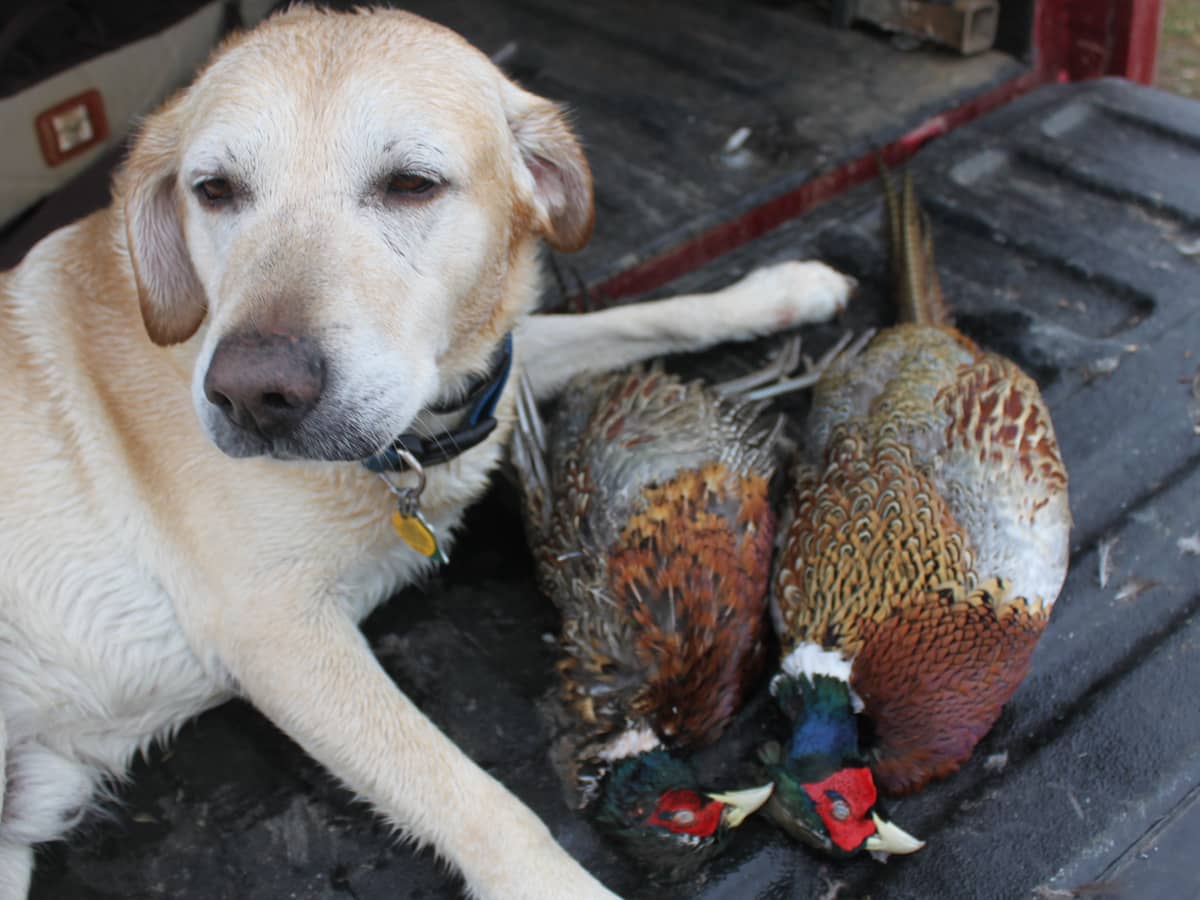
Soak It In. Wet conditions won’t stop a hunt from happening and can help concentrate roosters in likely places. Knowing where to go and how to approach their favorite rainy day hiding spots can help make for great hunting, despite the weather. Simonson Photo.
By Nick Simonson
Sportsmen are rarely dissuaded by the weather, unless it’s life-threateningly cold, or hot to the point of taxing the well-being of a field dog, adventures in the uplands continue through all sorts of conditions.
Wind, snow and even rain impact how pheasants relate to their habitat and where they seek shelter, and how these birds respond to damp environments can give hunters clues that lead to better success, when the heavens open up and rains highlight a scheduled day afield. What follows are tips to help hunters find pheasants in the rain and keep the adventure going despite any downpours.
Heavy Stuff
In wet conditions, pheasants will do what non-hunting humans like to do – stay set someplace dry and warm. For these reasons it is key to identify those outdoor spaces that provide the most protection from rainfall, as these areas are where the birds will be. What this means is picking out those stands that act as a buffer from moisture, such as dense clumps of brush, or shelterbelts with a good mix of heavy cover like pines, plum thickets and other thick bushes. With taller grasses in which to hide that also serve as a tent of sorts, pheasants will utilize the small spaces in these brushy areas to stay as dry as possible, while taking escape routes out of them as needed if predators or hunters should show up.
Additionally, thermal cover like cane and cattails are worth a look, as the overhanging leaves and stems create places that prevent much of the rain from reaching the birds underneath. Willow thickets alongside slough areas help to also provide a similar bunker as reeds and leaves stack up to provide protection from moisture. Approach them carefully and be ready for a big flush from multiple pheasants.
Into the Wind
Wet conditions, with habitat areas like those mentioned above, will help keep pheasants in place throughout the day. As they sit for the extended period of time, they generate a heavy scent pocket for dogs to find in the field. The damp environment will also hold that scent a little better than on drier days, making it easier for dogs to pick up. Work into the wind, particularly along the back side of those brushlines and shelterbelts where birds are likely to be, and trust the dog’s nose, watching for signs of birdiness. Usually, the downwind side of those structures is where roosters will sit, as much of the rain which is borne on the wind will be absorbed by the trees and bushes, making for a fairly dry area on the leeward edge of the buffer.
While the birds may be there, they won’t be for long as a dog approaches and they will likely skitter through the trunks and bases of the claim and out the other side of the belt. Have another hunter man up and take on the challenge of the windy and rainy side to intercept those roosters on their escape, even if the conditions are less than desirable.
Rain doesn’t have to ruin a pheasant hunt and in fact, it can produce some very memorable moments despite the challenges. Target that cover which helps protect roosters in wet times, use the wind to locate them, and adjust to their escape tactics to convert now and into the season. Make it a point to wipe down a shotgun that has gotten rained on during a hunt and give it a thorough cleaning upon returning home to prevent rust or corrosion and keep it in good, operational shape.
Follow these tips for continued upland success, despite whatever the weather might be as the season gets started, and even later into the autumn.
